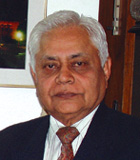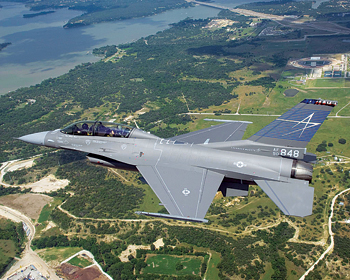INDIAN ARMED FORCES CHIEFS ON
OUR RELENTLESS AND FOCUSED PUBLISHING EFFORTS

SP Guide Publications puts forth a well compiled articulation of issues, pursuits and accomplishments of the Indian Army, over the years

I am confident that SP Guide Publications would continue to inform, inspire and influence.

My compliments to SP Guide Publications for informative and credible reportage on contemporary aerospace issues over the past six decades.
- Prime Minister witnesses 'Bharat Shakti' – a Tri-Services Firing and Manoeuvre Exercise in Pokhran, Rajasthan
- Interim Defence Budget 2024-25 — An Analysis
- Union Defence budget 2024
- Prime Minister Modi Commemorates Indian Navy Day in a Grand Ceremony
- Prime Minister Modi Flies in the LCA Tejas
- New Chapter in India-Italy Defence Ties
- Airpower beyond Boundaries
Fighting Falcon Made in India

The F-16 has a long and impressive track record of operations around the world and is regarded as one of the most successful combat platforms in the history of military aviation
During his visit to the United States in the last week of September this year, Prime Minister Narendra Modi succeeded in fuelling aspirations of the business community in both the nations about fresh opportunities arising in their respective domains. In addition, the two Heads of State were also able to elevate the strategic partnership between India and the US to a new level. It was in the backdrop of these developments that the Bethesda-based US aerospace and defence major Lockheed Martin Corporation brought up the issue of manufacturing its iconic F-16 Fighting Falcon in India. During a meeting in New York on September 24, 2015, Marillyn Hewson, the Chief Executive Officer of Lockheed Martin, discussed the proposal with Prime Minister Narendra Modi.

Photo Credit: Lockheed Martin
Evolution of the Fighting Falcon
In the early 1970s, as a long-term plan to replace the F-15 Eagle, the US Air Force (USAF) initiated the lightweight fighter aircraft development programme. Amongst the several contenders in the race, the two designs shortlisted for the fly-off were the single-engine YF-16 from General Dynamics and the twin-engine YF-17 by Northrop. Many of the prospective customers would have preferred a twinengine design on account of the higher level of safety a combat aircraft equipped with two engines would provide as compared to a single-engine platform. However, it was the single-engine YF-16 that was selected by the USAF against the YF-17 which was the only twin-engine aircraft in the competition. The YF-17 design rejected by the USAF was taken over by the US Navy and the task was assigned to McDonnell Douglas to develop a twin-engine carrier-borne combat aircraft. The YF-17 thus evolved into the highly successful F/A-18 Hornet and later into the land-based F/A Super Hornet.
| The IAF should be reasonably comfortable with the Lockheed Martin F-16IN Super Viper in its modern avatar. A facility to manufacture the aircraft in India will be an added advantage for the IAF as it will provide assured and effective product and maintenance support, something that the IAF would certainly need. |
The YF-16, redesignated as the F-16 Fighting Falcon, is a singleengine multi-role combat aircraft that was inducted into the USAF in the mid-1970s. Originally designed as an air superiority fighter, over the years, the F-16 has evolved into a potent multi-role combat platform with all-weather capability. In 1993, the aircraft manufacturing business of General Dynamics was acquired by Lockheed Corporation, a company that after merger in 1995 with Martin Marietta, came to be known as Lockheed Martin Corporation as it exists today.
The F-16 was one of the first platforms to employ the fly-bywire control system. Over the last nearly four decades, the Fighting Falcon has gone through a process of evolution through major upgrade programmes. The latest variants of the Fighting Falcon is equipped with the AN/APG-80 Active Electronically Scanned Array (AESA) radar, better avionics and sensors all leading to improved situational awareness for pilots and substantially enhanced payloads to meet with the demand of the rapidly evolving operational environment. The aircraft has ultra high-resolution mapping with automatic terrain following and is capable of air-to-air tracking of multiple targets. Many of the technologies developed for the F-35 fifth-generation fighter aircraft would be incorporated in the new versions of the F-16.
So far, Lockheed Martin has delivered more than 4,500 F-16 Fighting Falcons to 28 international customers which includes the Pakistan Air Force which has the older Block 15 version, a platform that has been phased out by the other air forces. Pakistan also received some of the latest Block 50/52 version from the US in 2012. The F-16 Fighting Falcon has a long and impressive track record of operations around the world and is regarded as one of the most successful combat platforms in the history of military aviation. More recently, during trials, it is reported to have proved to be superior in close combat to the Lockheeed Martin’s F-35 Lightening II Joint Strike Fighter.
Fighting Falcon on the Indian Scene
The F-16 was one of the contenders for the multibillion-dollar tender for 126 medium multi-role combat aircraft (MMRCA) for the Indian Air Force (IAF). For this competition, the original equipment manufacturer (OEM), Lockheed Martin Corporation, had offered the F-16IN Super Viper. Based on the F-16E/F Block 60, the F-16IN Super Viper had a number of modern features which apart from the AN/APG-80 AESA radar, included conformal fuel tanks, GE-F110-132A engine with full authority digital electronic control (FADEC) systems, electronic warfare suite and infrared search and tracking (IRST), updated glass cockpit and a helmet-mounted sight. As per the OEM, “The F-16IN Super Viper in its class was the ultimate fourth-generation platform and the most advanced fighter ever built. This aircraft would enable the IAF to seamlessly transit to fifth-generation fighters.” In case the F-16IN Super Viper had won the MMRCA contract, Lockheed Martin Corporation would have incorporated in the platform many of the technologies developed for the F-35 fifthgeneration fighter ordered by the USAF. In the event of the F-16IN Super Viper winning the contract, as per the terms and conditions, the OEM would have had to manufacture 108 aircraft in India, the remaining 18 having been supplied directly in a flyaway condition. Unfortunately, this was not to be so as the F-16 was edged out of the race for the MMRCA contract.
| Over the last nearly four decades, the Fighting Falcon has gone through a process of evolution through major upgrade programmes |
The IAF received another shock when the MMRCA tender for 126 Rafale jets failed to make progress and after nearly eight years since the issue of the request for proposal (RFP), the tender had to be cancelled on account of some insurmountable problems encountered during contract negotiations. Described as ‘Mother of All Deals’, the MMRCA tender for 126 Rafale jets has been replaced by a mini-deal directly between the Governments of India and France for the purchase of just 36 Rafale jets in flyaway condition as against 126. That leaves the IAF with the problem to find a way to induct the balance of 90 combat jets out of the originally targeted 126 aircraft in the MMRCA tender. The Government of India would in all likelihood insist that these 90 jets be manufactured in India, an imperative in the context of the ‘Make in India’ philosophy of the Modi-led NDA Government. Given the way the contract negotiations with Dassault Aviation of France, the OEM for the Rafale, progressed, it is highly unlikely that the Government of India will accept any proposal to manufacture the Rafale in India; exorbitant costs being one of the deterrents. That leaves the door wide open for other players such as Eurofighter Typhoon from EADS that was renamed in 2014 as Airbus Defence and Space, the Gripen from Saab of Sweden and the F-16IN Super Viper.
But the requirement of the IAF will go well beyond 90 combat jets as with the retirement from service of the MiG-21 and MiG-27 fleets and the authorised strength of combat squadrons going up to 42 in the next decade, the IAF will need at least another 200 fighter aircraft. Part of this requirement could be offset against the fifthgeneration fighter aircraft (FGFA) being developed jointly by the Indian aerospace major the Hindustan Aeronautics Limited (HAL) and Sukhoi of Russia. It is reported that the IAF plans to order only 65 of the FGFA in which case, to begin with, the IAF will be able to absorb a minimum of 225 combat jets manufactured in India. Further, with the retirement of the MiG-29, Jaguar and Mirage 2000 fleets in or around 2030 and little certainty about the availability of the light combat aircraft (LCA) Mk II in adequate numbers and in the required time frame, dependence on foreign sources to meet with the demands of the IAF for new-generation combat jets will only increase substantially. The market for indigenously produced new-generation combat jets will undoubtedly be significant justifying the huge investments by any global aerospace major.
American Military Aircraft in India
With the break-up of the Soviet Union 25 years ago and the emergence of a unipolar world, the IAF has had access to modern military aircraft from the US. In the last decade, the IAF has inducted the Boeing Business jets for VVIP travel as also some of the most modern transport aircraft such as the Lockheed Martin C-130J Super Hercules for special operations and the Boeing C-17 Globemaster III strategic airlift aircraft that has given the IAF a global reach. The Indian Navy has inducted the Boeing P-8I long-range maritime patrol aircraft. As per reports in the media, the IAF should be able to induct in the near future the Apache AH-64E attack helicopters and the Chinook heavy-lift helicopters, both from Boeing. The IAF should be reasonably comfortable with the Lockheed Martin F-16IN Super Viper in its modern avatar. A facility to manufacture the aircraft in India will be an added advantage for the IAF as it will provide assured and effective product and maintenance support, something that the IAF would certainly need.





